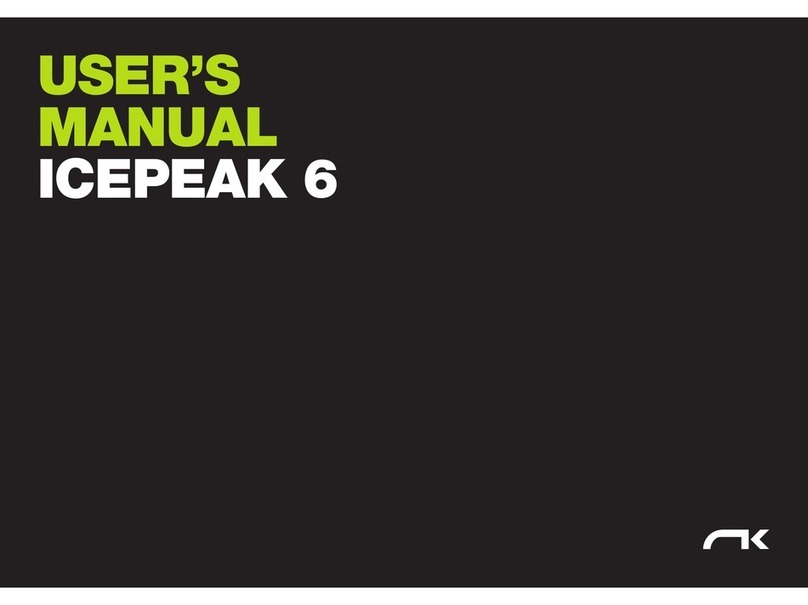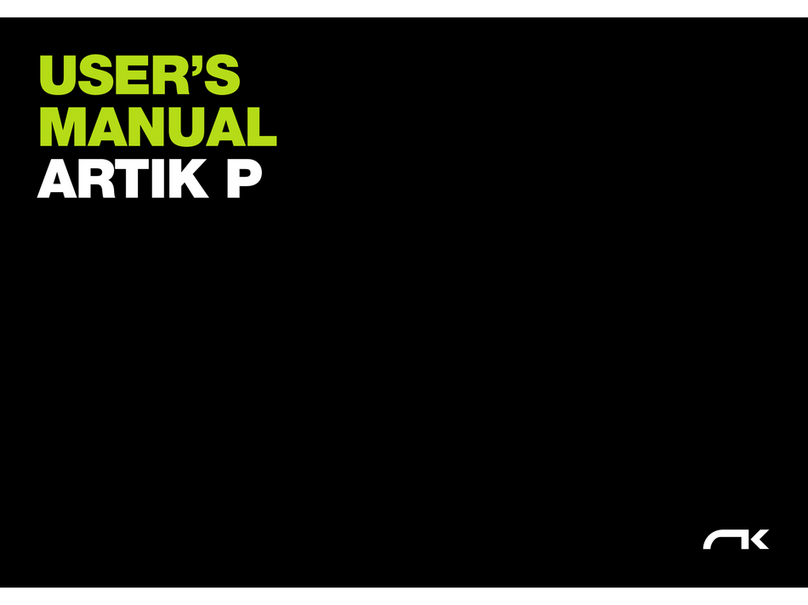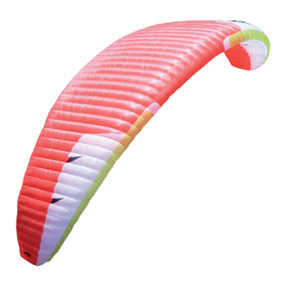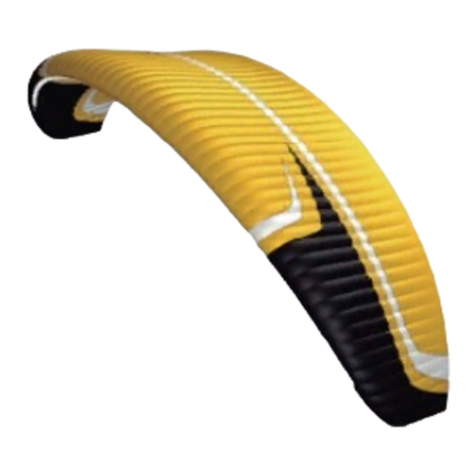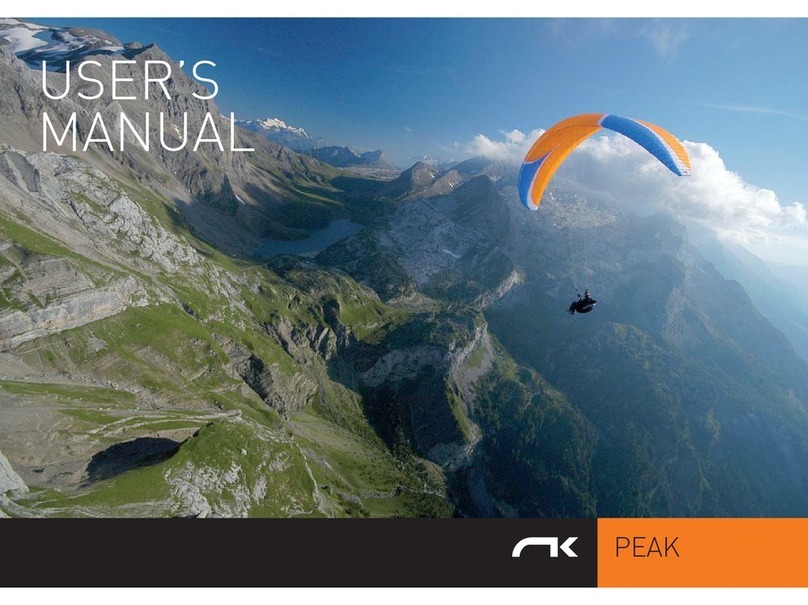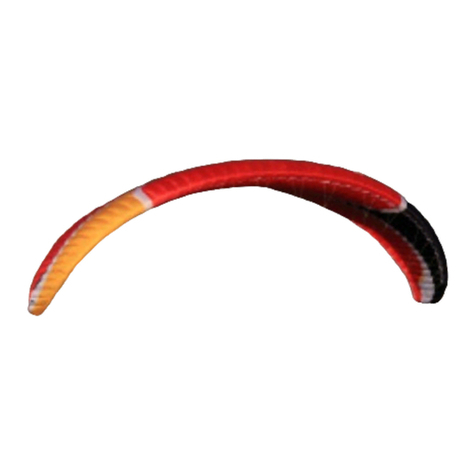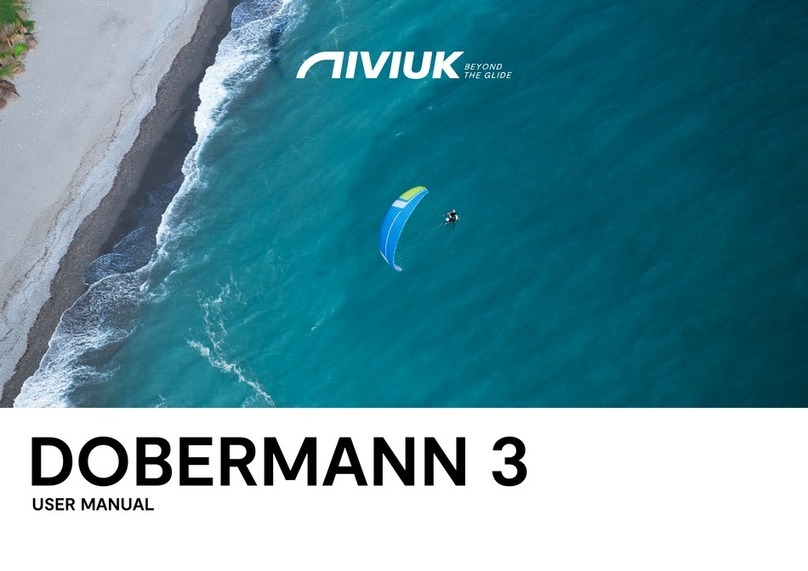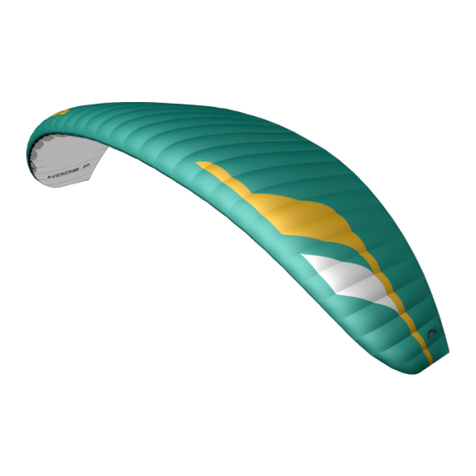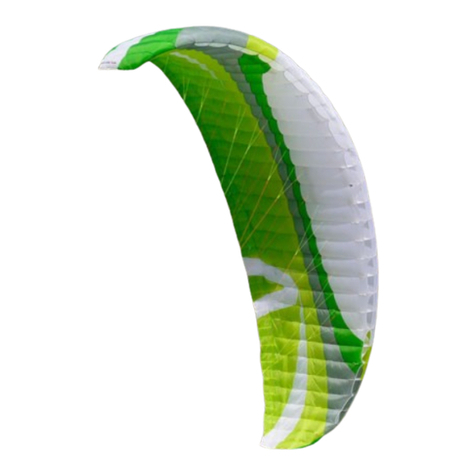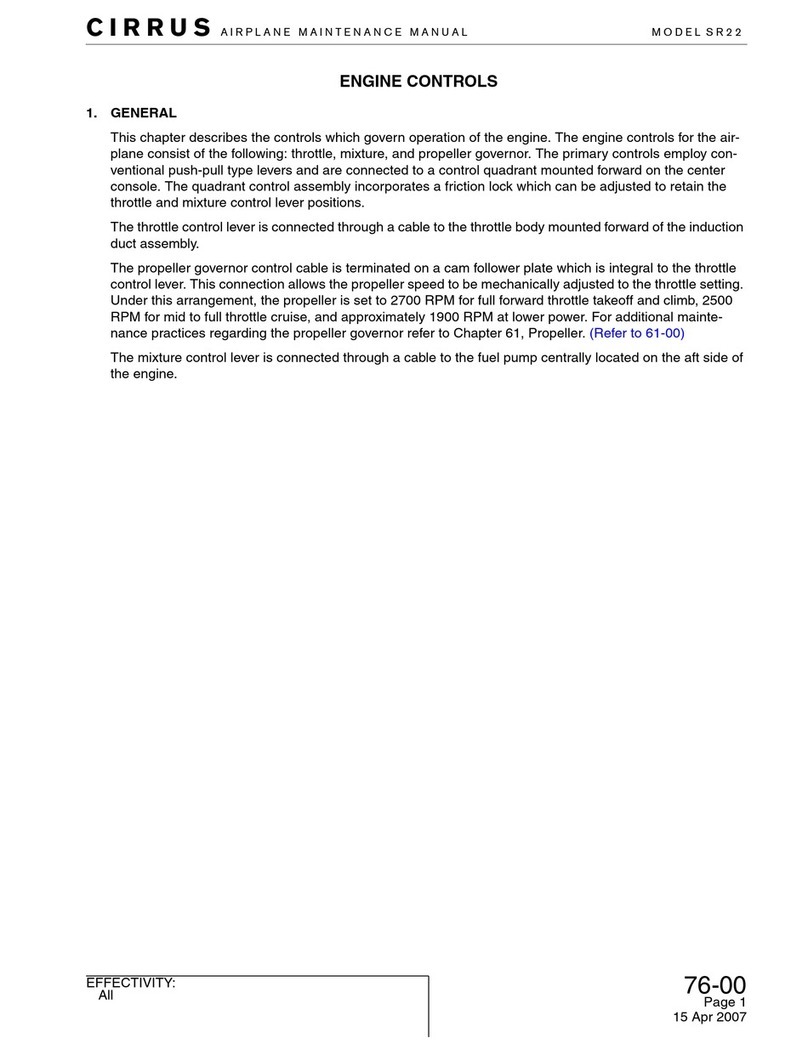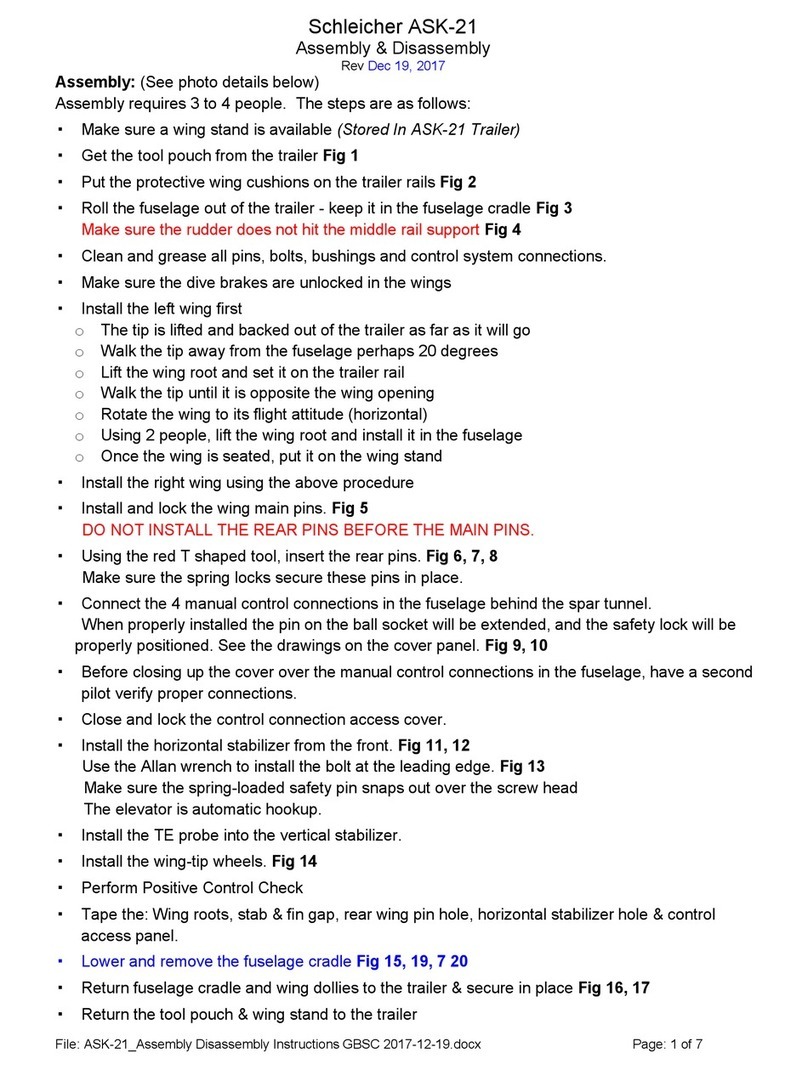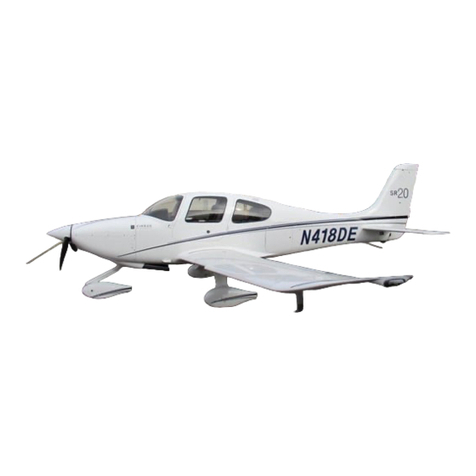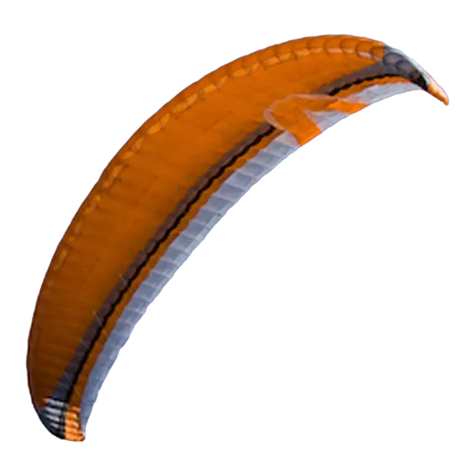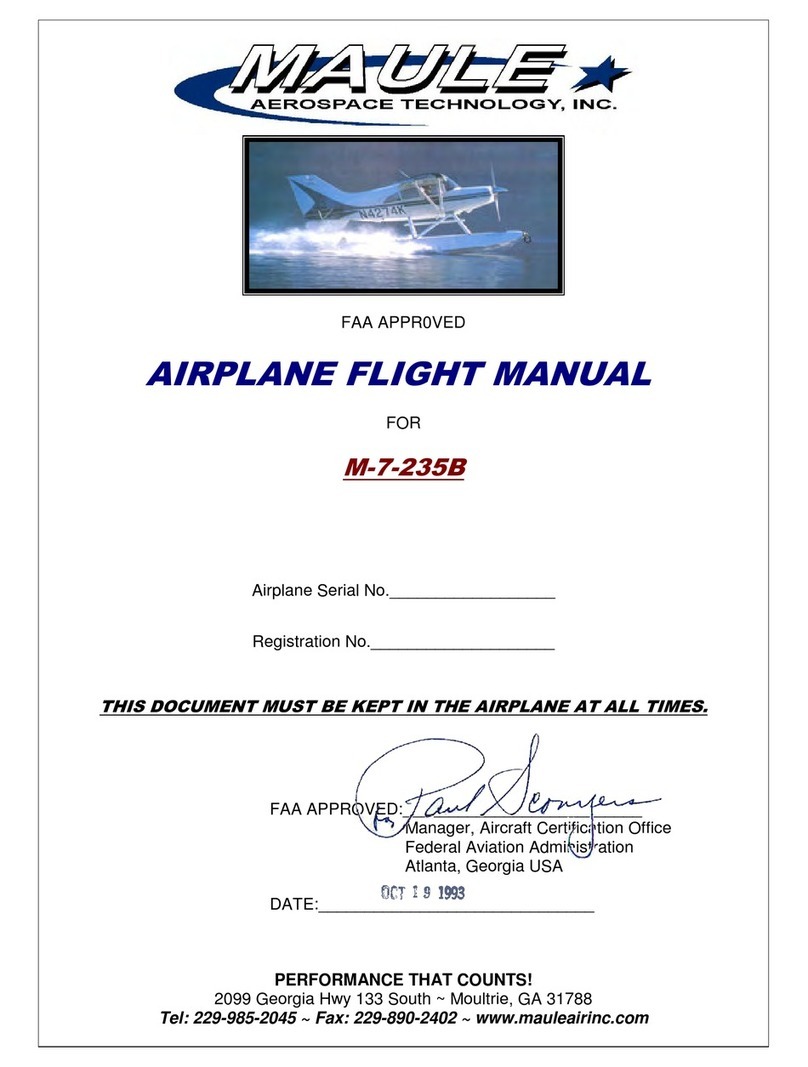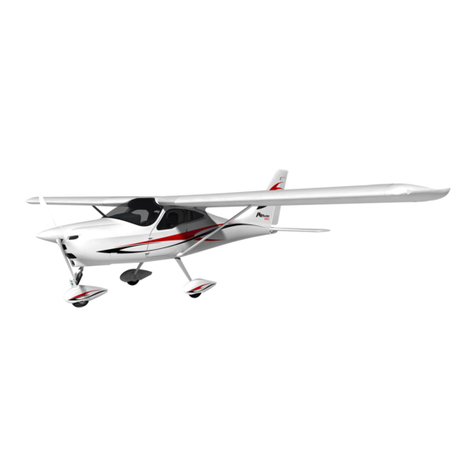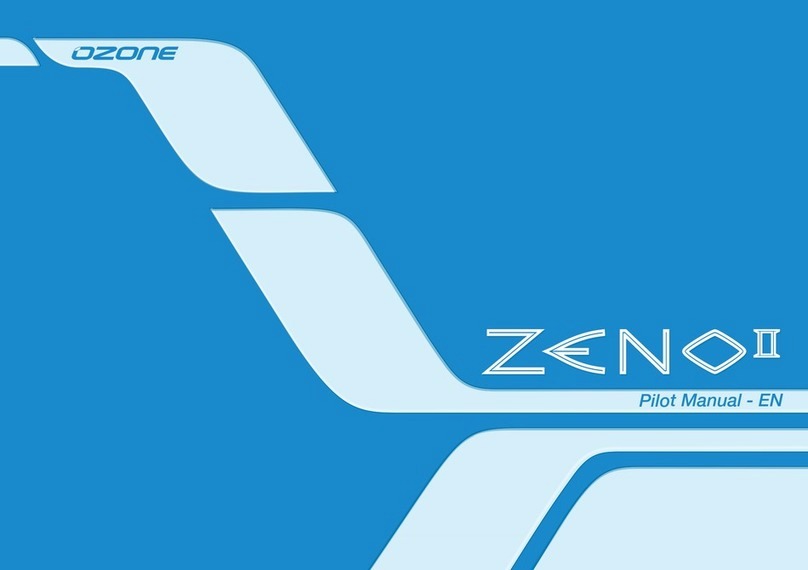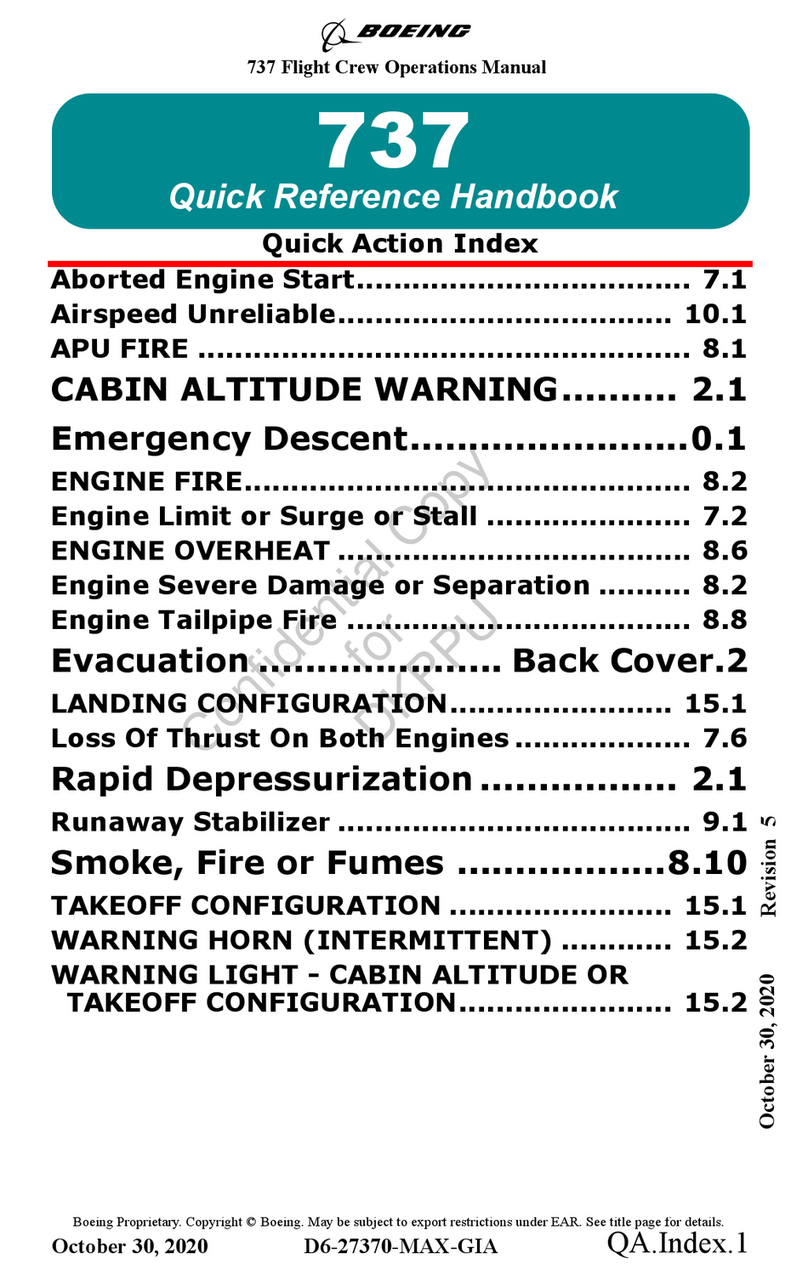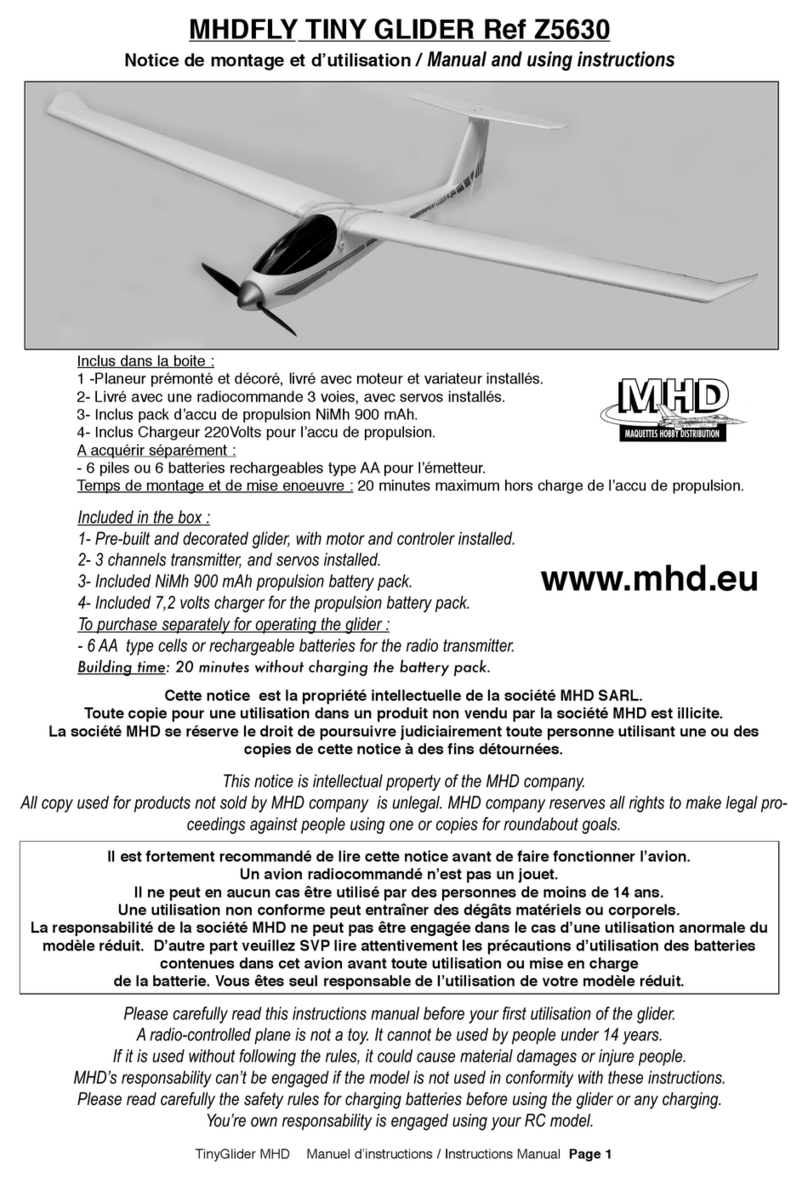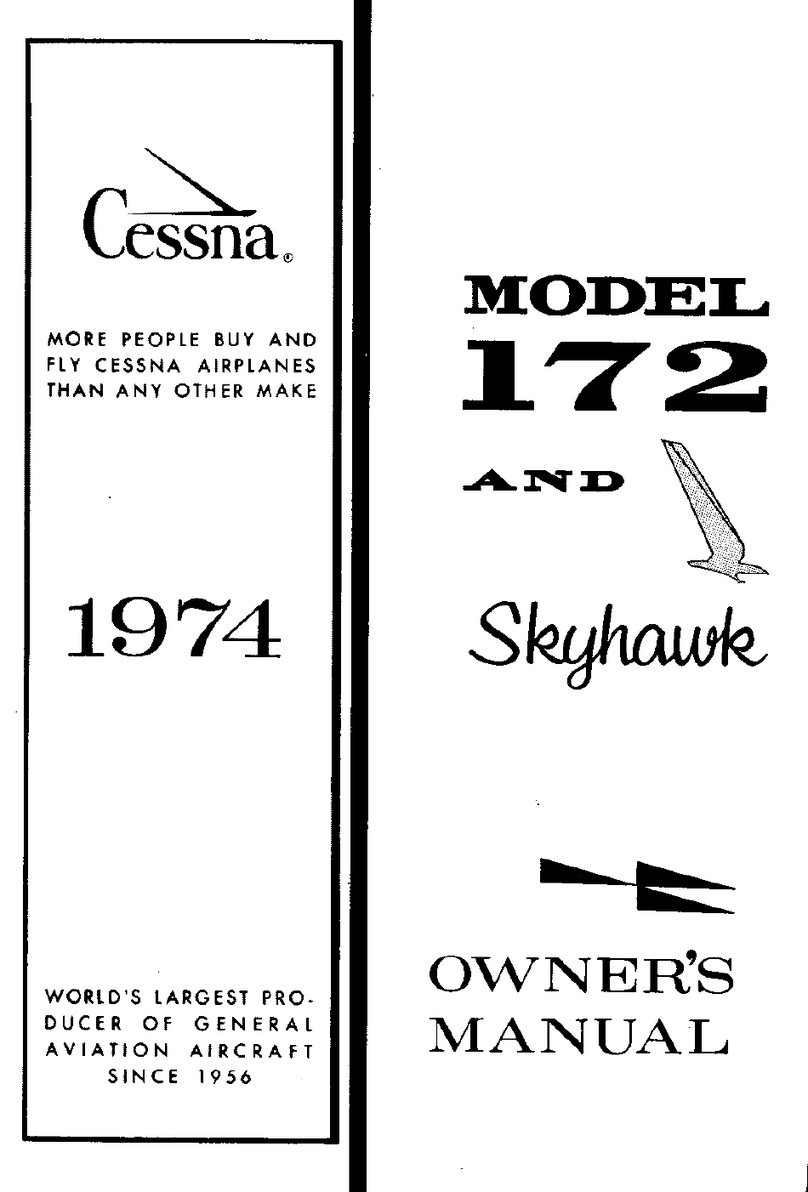
5
on piloting and enjoying the ight. And, with smooth handling, take
advantage of all favourable conditions.
In all aspects of ight, the wing is very solid and stable. The glide is
smooth, even when fully accelerated. During glides, the wing maintains
altitude and the wing remains stable. Improved turn precision means
handling is less physical and provides better feedback. Inating the wing
is much easier and gentler, without overshooting.
Flying this wing is very intuitive, with clear and useful feedback about the
airmass. It responds to the pilot’s inputs effectively and even in turbulent
conditions it remains stable and solid.
The KOYOT 3 P ies efciently. It enters thermals with sufcient speed
to centre in the lift and climbs progressively. The handling is progressive
and effective for even more ying pleasure under an exciting wing of
extraordinary quality.
It is lightweight, even lighter in ight and easy to pilot, with outstanding
turbulence buffering and a surprising range of speed for incredible glides.
1.4 CONSTRUCTION, MATERIALS
The paraglider has all the technological innovations used on other Niviuk
gliders and is built with the most careful selection of current materials. It
has all the current technology and accessories available to improve pilot
comfort whilst increasing safety and performance.
In the design of all Niviuk products the team aims to ensure development
and continuous improvement. The technologies developed in recent
years have allowed us to develop greater, better wings. It is in this
context that we would like to introduce the technologies included in this
new model.
RAM Air Intake - this system is characterised by the arrangement of the
air inlets, to ensure optimal maintenance of internal pressure. Thanks to
this design, we were able to reduce their size, while maintaining the same
air ow at all angles to improve laminar ow. More consistency across
the whole speed range and better performance without compromising on
safety.
Titanium Technology (TNT) – a revolutionary technique using titanium.
Using Nitinol in the internal construction provides a more uniform prole
and reduces the weight to gain efciency in ight. Nitinol provides the
highest level of protection against deformation, heat or breaks.
SLE - provides more rigidity and stability along the span of leading edge
but also allows full exibility along the both the vertical and horizontal
axis. A reduction in the amount of Mylar, in comparison to previous
proles, has resulted in less weight and easier launches.
3DP - an optimised process to cut the fabric panels to ensure the
perfect form of the leading edge. Creating separate panels for each of
the sections at the front of the wing means the sail fabric is more taut
and crease-free. During the cutting, the optimal orientation of the fabric
section is selected, depending on its nal location. If the fabric pattern
is properly aligned with the axes of load, it suffers less deformation after
repeated use, to the long-term benet of the leading edge.
3DL - adding an extra reinforced seam to the leading edge helps to
ensure a more consistency and volume in the prole. Providing a more
efcient 3D contour.
The use of these technologies is a big technological leap forward in
building wings and a big improvement in ight comfort.
For the construction process of the KOYOT 3 P we use the same criteria,
quality controls and manufacturing processes as in the rest of our range.
From Olivier Nef’s computer to fabric cutting, the operation does not






